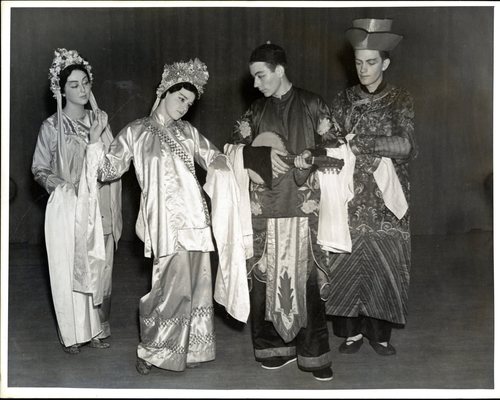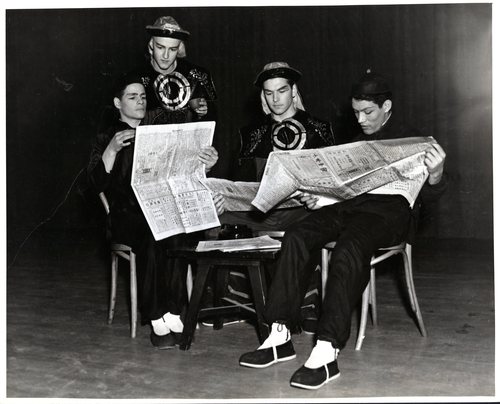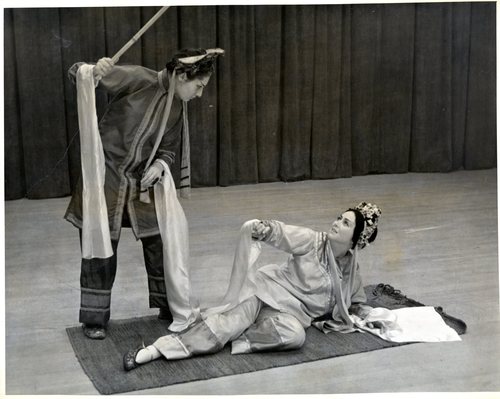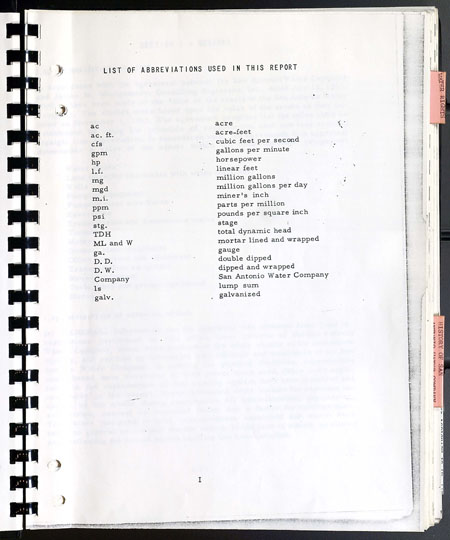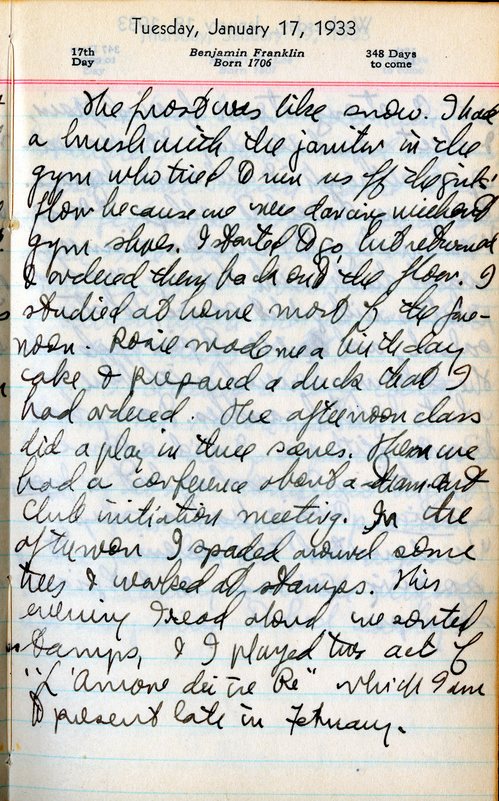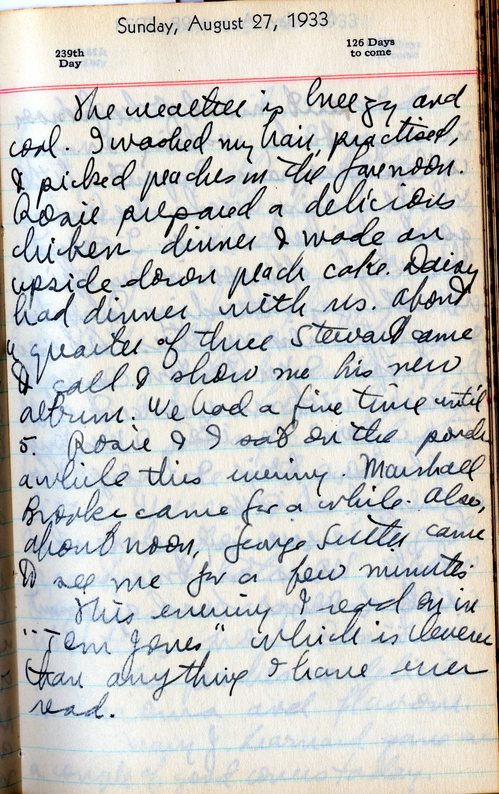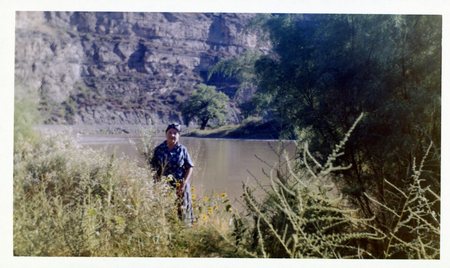As highlighted in a previous blog post, John Laurence Seymour’s production of A Protegee of the Mistress constituted the first production of that particular play in the United States.
Nine years after that performance Seymour picked another play to perform for the first time in the United States. For the first time ever, the English-language production of The West Chamber took stage in 1938. Touted as a “Chinese Classic” in local newspapers the show included meticulous research on traditional Chinese stage-makeup, props, and staging in order to faithfully re-stage the production in the United States. However, one glaring issue with the production is that the entire cast was white.
Actors donned makeup which relied on thick black eyeliner to create sharp, angled eyebrows and also to create the illusion of almond-shaped eyes. This heartily begs the question, is this considered an example of, “yellow face”? A significant effort was made by Seymour to share his appreciation of Chinese culture and to teach both actors and the audience about traditional Chinese Theater (see program notes included below). Far from creating a caricature of Chinese peoples and cultures, the production seemingly constituted a faithful recreation of the play originally written in 1250AD by the Chinese playwright, Wang Shih Fu.
Regardless of good intention though, it is hard to forget the fact that the Chinese Exclusion Act would not be repealed until 5 years after this production. One year prior to this production, the Hollywood movie version of The Good Earth was released. Set in Northern China during the years leading up to WW1, the film follows a Chinese farming family and their numerous struggles.
Even though Asian-American movie star, Anna May Wong had been considered for the main role, she never received an offer for the part because of the white, male lead, Paul Muni. Due to anti-miscegenation rules in Hollywood during that time, any actress playing Muni’s wife also had to be white. Due to these kinds of laws and ever-present racism, it became basically impossible for Asian’s and Asian-Americans living in the United States to tell their own stories in any kind of theater.

